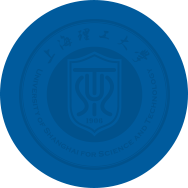Home · Research · Discipline · Optical Engineering Discipline
The Strategic Innovation Team for High-End Equipment System Integration and Simulation, taking national development strategy as its guidance, focuses its research on the key scientific issues of great social value and application prospect, and those concerning the development and future of our nation. The team, based on their common research interests, goals, and previous achievements, and with merged advantages of two key disciplines of USST (System Science---- a “Peak Discipline”, and System Engineering----a featured discipline for its application in national defense), has been devoted to modeling, analysis, fault diagnosis, synthesis, integration and simulation of the structure, performance and function of high-end equipment complex system used in the intelligent manufacturing and national defense sectors by the application of the principles and methods of system theory, information theory and control theory. The team provides strong theoretical support in the field of system science and system engineering for the design and manufacture of high-end equipment system, and meanwhile it promotes the innovative development of intelligent manufacturing, robotics and sophisticated weaponry in China by means of talent cultivation and scientific and technological services, providing further service for the national strategy of “Made in China 2025” and building Shanghai into the Center of Innovation for Science and Technology.
With the approaching of a new round of revolution and reform in science, technology and industry, the major developed countries in the world have successively reshaped their strategic layout by focusing on developing high-end equipment in order to seek technical advantages and remain at the commanding heights in the global competitions. Typical examples are the National Strategic Plan for Advanced Manufacturing in the United States, Industry 4.0 of Germany, British High-value Manufacturing, New Industrial France, and the Robot Strategy of Japan, featuring in the integration of advanced manufacturing technology and information technology into the high-end equipment.
University of Shanghai for Science and Technology, originated from University of Shanghai founded in 1906, and the later Shanghai Institute of Mechanical Engineering affiliated to the former Ministry of Machinery Industry, has been enjoying the reputation of “the Huangpu Military Academy in the Manufacturing Sector”(the earliest and best university in the sector of manufacturing) in China. It is a key university under the administration of Shanghai municipality, jointly built by State Administration of Science Technology and Industry for National Defense and Shanghai Municipal People’s Government. The Discipline of Systems Science and Systems Engineering focuses its research on complex systems, including natural system, human society system, and complex artificial system. High-end equipment is usually considered as an advanced complex artificial system that comprises many organically integrated parts of intensive technology and powerful functions, its development involving high cost, long production cycle, complex system structure, and massive cutting-edge technologies.
The research team, on the basis of long-term close cooperation, has been performing research work on integration and simulation of complex system in high-end equipment, and has formed several distinctive and internationally influential research directions. The team members have published nearly 500 papers (including accepted papers) in SCI journals in the field of systems and control, including more than 100 papers in the top journals in this field, over 70 papers have been listed as high-cited ESI papers (about 10 of them were listed as the top 0.1% of ESI hot papers). The team has published 7 monographs, has undertaken over 30 national and provincial scientific research projects. They have received one second-class prize of National Natural Science Award, and several provincial and ministerial level science and technology awards.


Copyright@2018 University of Shanghai for Science and Technology. All rights reserved. 沪ICP备08108292号-5 沪公网安备:31009102000040